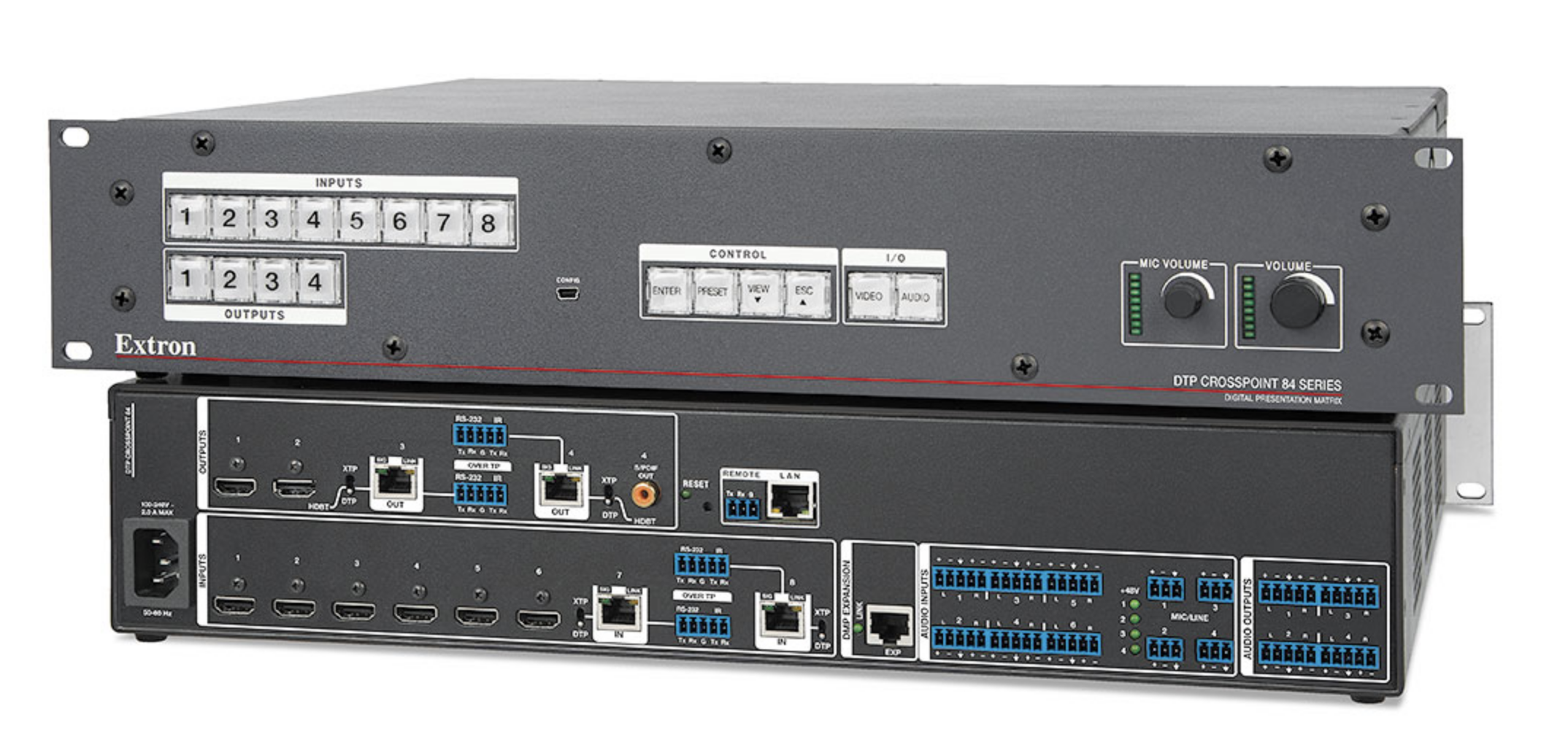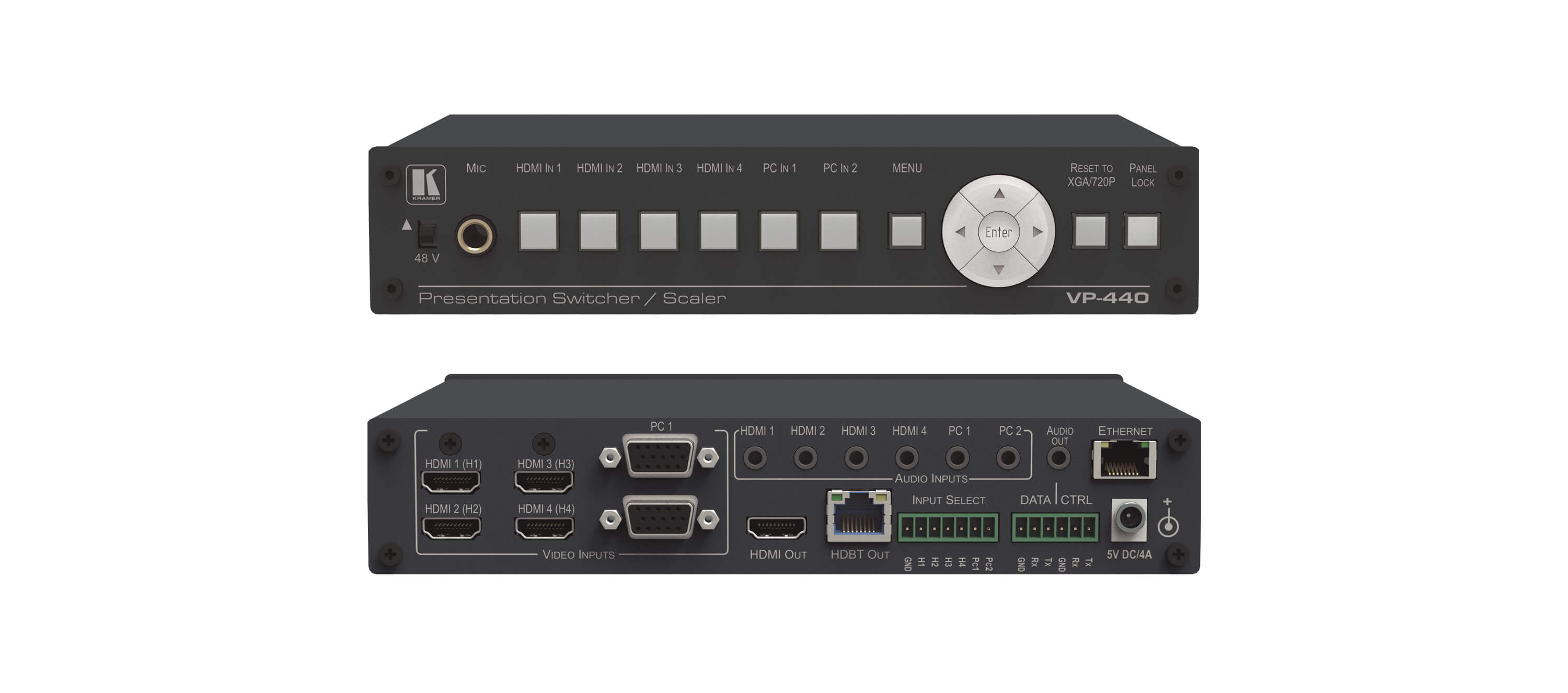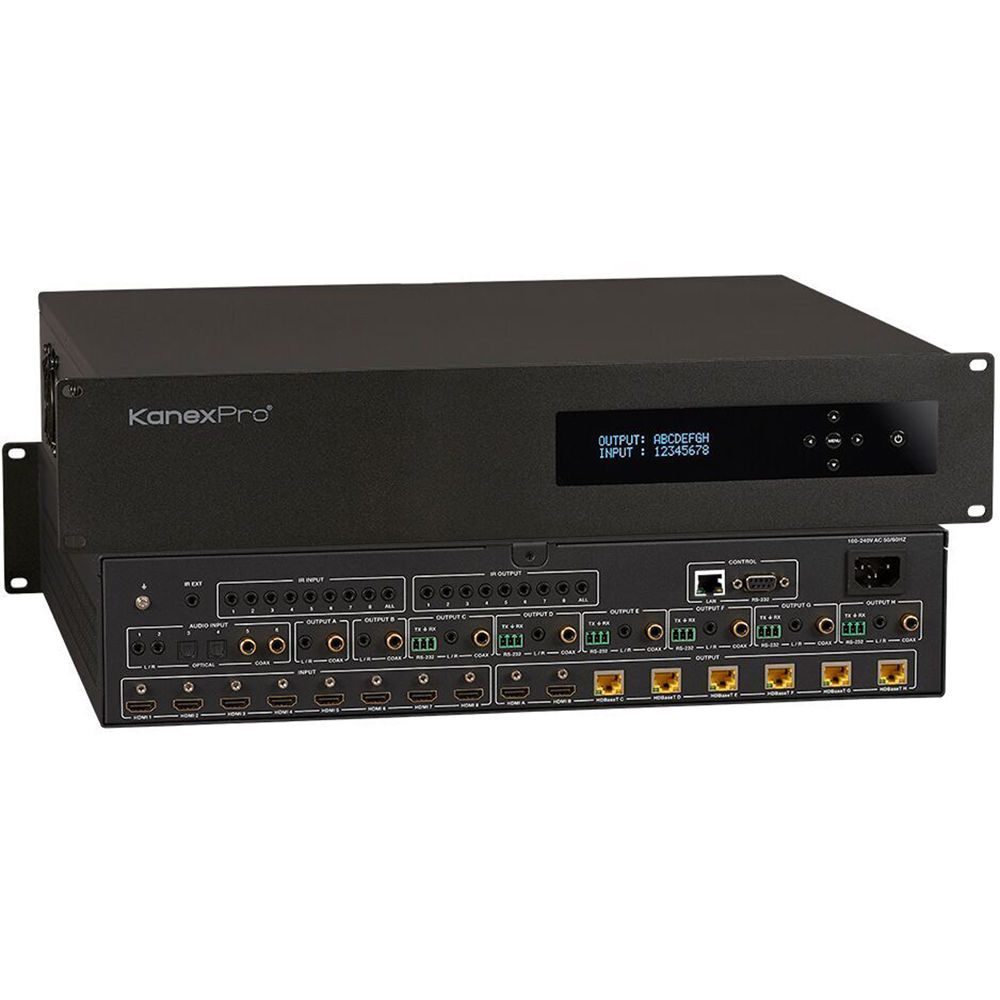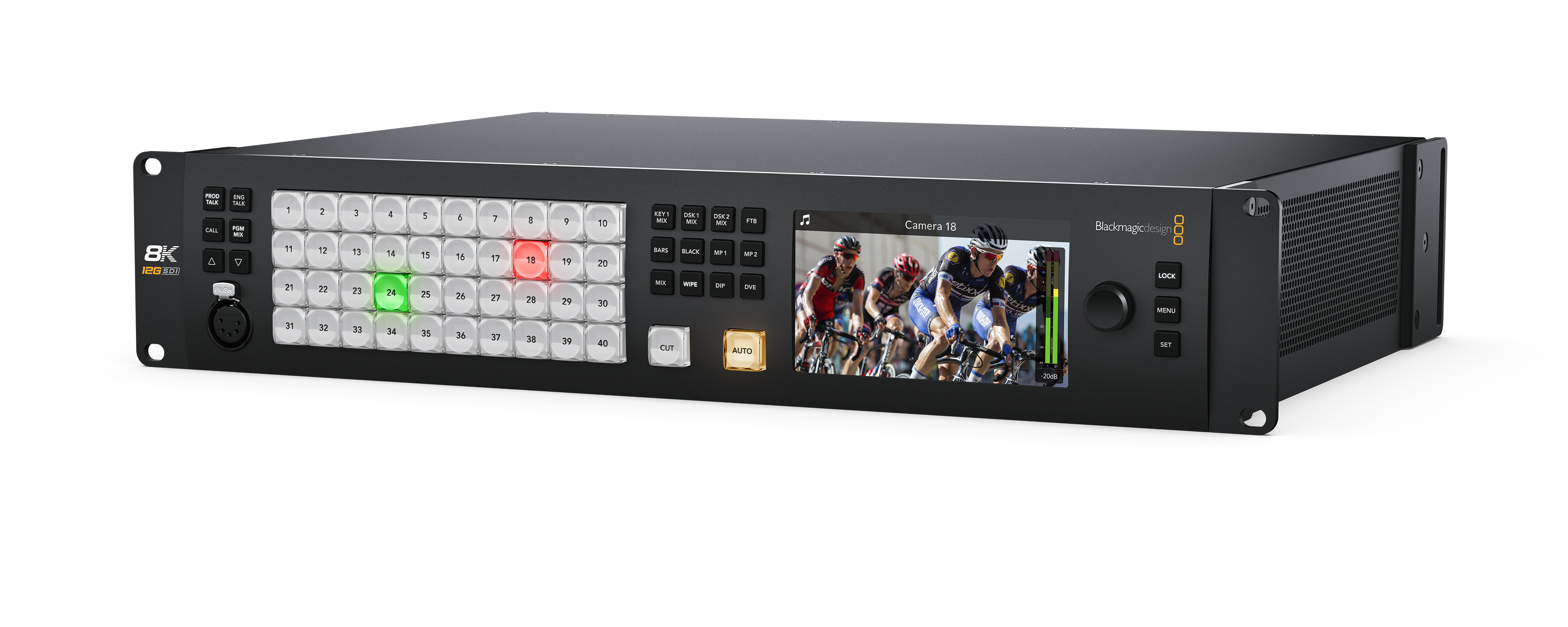Routers and switchers are similar in nature. A router connects sources with their destinations, sending a signal along a specified course from its starting point to its intended end point in a straightforward manner. “It’s all about signal distribution, management, and instant connections between equipment—whether that’s a one-to-one connection or sending the same signal to multiple destinations at the same time,” said Bob Caniglia, director of sales operations, North America, at Blackmagic Design.
A switcher also sends and receives sources, but “it’s more nuanced as it can select or combine different signals to produce a final output,” added Caniglia. “Switchers include additional tools such as creative transitions, keyers for effects and graphics, DVEs, audio mixers, and more to help creatively bring a project to life.”
While routers can switch and switchers can route, they are two very different tools that stand on their own. As well, they can be combined to create a powerful workflow.
Scroll through the gallery below to see the latest routers and switchers for Pro AV.
Today and Tomorrow
Switchers available today can be multipurpose and future-proof. “Integrators can create incredibly professional customized workflows for their clients more than ever before,” said Caniglia. While current applications for 8K video are primarily limited to stadium-sized screens and digital billboards in Times Square, Caniglia sees a future in which super-high-resolution video proliferates. To prepare for the 8K future, Caniglia encourages integrators to help their clients future-proof by investing in switchers that support 8K while also delivering powerful Ultra HD and HD workflows, an all-in-one product. “While the thought of 8K might sound scary or out of reach to some, it’s never too early to plan for it. There are affordable and feature-rich switchers currently available that deliver HD, Ultra HD, and 8K capability in a single unit,” he said.

Access to professional features no longer depends on the size of the client, budget, or install. “Integrators can create tailored solutions across clients and markets based on their specific needs, rather than forcing a client’s workflow to fit a switcher,” said Caniglia. For example, a church might want to implement a four-input live streaming setup that’s manageable and easy for its volunteers to use, while a college needs an affordable 40-input Ultra HD setup for its stadium. “Integrators can deliver professional switcher solutions that perfectly meet both clients’ needs, as well as everything in between,” he said.
Blackmagic’s ATEM Constellation is an Ultra HD live production switcher that’s prepared for the 8K future. This massive 4 M/E switcher features 40 12G-SDI inputs, 24 12G-SDI aux outputs, four DVEs, 16 ATEM Advanced Chroma Keyers, four media players, four independent Ultra HD multiviews, two SuperSource processors, and even standards conversion on all inputs. When switched to work in 8K, all of these features are be combined to make a powerful native 8K switcher. Users even get built-in talkback and a professional 156 channel Fairlight audio mixer with EQ and dynamics.
Live events—from concerts and music festivals to live sports and house of worship programming—benefit from the console’s high input count, which enables productions to place multiple cameras for comprehensive coverage.
Professional Coping Mechanisms
Professional environments must cope with a wide variety of video displays and source devices with different capabilities that, when directly connected, might display warped or fuzzy images due to mismatched video formatting. “To avoid the resulting end user frustration, video switchers need to have proper EDID processing to ensure that video is displayed at the best possible resolution,” said Joe da Silva, director of product marketing at Extron. “For video conferencing and recording applications, HDCP processing in the switcher is especially important to allow sharing of spreadsheets and presentation slides that do not require HDCP encryption but might otherwise be blocked by video equipment that always encrypts by default.”

Video sources and displays are often located far apart, causing excessive signal loss and precluding the use of ordinary passive video cables. “Look for professional video switchers that provide extra DC current at their HDMI outputs to facilitate connecting active cables without the need for extra power supplies,” said da Silva. Professional video switchers should have built-in signal extension at their video connections, eliminating the need for external transmitters and receivers.
Some video switchers do more than video. Capabilities may include combining audio and video processing, audio amplification, and even control processing to provide an all-in-one solution, saving equipment cost and installation time.
A matrix switcher or router that has multiple video outputs can independently switch to any input. “Matrix switchers are traditionally deployed in larger installations where multiple display devices are needed to show different video sources simultaneously,” said da Silva. “These types of installations often require high system availability and reliability. Large-sized matrix switchers have modular construction where video input and output boards are available in a variety of video signal types. Local switching can be complemented with twisted pair and fiber optic boards to support signal extension requirements. These matrix switchers can feature redundant, field-replaceable power supplies, and hot-swappable components to minimize system downtime.”
A growing demand for video recording and conferencing is generating demand for smaller matrix switchers suitable for installation in meeting rooms.
Extron’s DTP CrossPoint 4K Series models are versatile presentation matrix switchers with the capacity to support advanced AV systems. Features include a matrix switcher with 4K inputs and outputs, built-in independent scalers powered by Extron Vector 4K scaling technology that support glitch-free switching, integrated DTP and XTP signal extension, comprehensive audio DSP and AEC capabilities, a high-performance mono or stereo amplifier, and an expandable control processor.
Getting Smarter
Switchers are much smarter today than they were just a few years ago. “With the advancement of display technologies and formats, it’s difficult to know exactly what equipment will be needed to get the job done,” said Manny Hernandez, senior product manager at KanexPro. “Powerful and affordable scaling switchers allow integrators to perfectly manage source resolutions and video formats so that they will work perfectly with the connected display.”

When doing research to make purchasing decisions, Hernandez recommends that, in addition to resolution control, integrators look for features that help manage EDID and HDCP profiles. “Most importantly, look for remote control functions like Close Contact, IP/TCP, or RS-232 switching so that the switcher can be easily integrated with third-party control systems or switch plates,” he said. “It’s not feasible to trust an auto-switching function to manage the system, and these tools will ensure a stable and reliable installation.”
The advancement in scaling chipset technology has allowed for smaller and easier-to-manage physical designs that encourage deployments in environments where an AV rack or closet isn’t an option.
“Take advantage of the powerful control tools, like Close Contact, TCP/IP, and RS-232, along with powerful media management features like resolution scaling, EDID management, and HDCP content control to reduce the number of service calls and compatibility issues while meeting the client’s needs and staying in budget,” said Hernandez.
Multipurpose
Most pro AV switchers are multifaceted—it’s the nature of the product category. Kramer’s new ProScale VP-440 is a virtual Swiss Army knife built to accommodate today’s demanding multipurpose environments.

“The VP-440 is high-performance, cost-effective, and incredibly easy to use,” said Clint Hoffman, CEO of Kramer Electronics U.S.
The VP-440 is a robust six-input presentation switcher/scaler with four HDMI and two computer graphics (VGA) inputs. The unit scales the video, embeds the audio, and outputs the signal to an HDMI output and an HDBaseT output simultaneously. Key features of this protean switcher/scaler include Kramer’s PixPerfect Scaling Technology for precision pixel mapping and high-quality scaling. Users can choose from multiple aspect ratio selections (full, best fit, overscan, underscan, letterbox, and panscan). Designed for classrooms, boardrooms, and rental applications, the VP-440 is equipped with a built–in ProcAmp (color, hue, sharpness, noise, contrast, and brightness).
The unit’s color sampling solution supports 4:4:4 (RGB and YUV) and 4:2:2 (YUV) color sampling in native mode. The microphone input can be used for mixing, switching, or talk-over, and a dedicated RS-232 port can be used for bidirectional data tunneling via HDBaseT. Because Kramer is dedicated to AV that works seamlessly within an IT framework, the VP-440 can be managed by Kramer Network. The VP-440 is unique in the company’s line of advanced ProScale presentation scaler-switchers as a desktop-size or half-rack-size unit.




